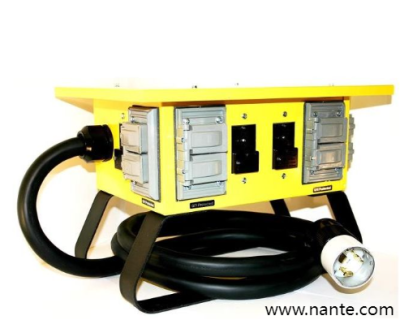Hands On Guide for Inspecting and Caring for Socket Assemblies
-
Posted by Lars xinnyi Filed in Technology #Industrial Socket Box #Industrial Socket Box Manufacturer #Nante Industrial Socket Box 117 views
Keeping power distribution running smoothly depends on attention to a component often overlooked the industrial socket box . A steady routine of inspection combined with targeted maintenance helps facilities reduce interruptions and preserve equipment function. This guide walks operations staff through hands on checks cleaning tips and sensible service choices that bring lasting value to daily workflows.
Start inspections with a close visual review of the enclosure and mounting points. Note any surface damage loose fasteners or gaps where dust or moisture might enter. Wipe external faces with a soft cloth and use a small brush to clear crevices. When opening covers follow isolation steps so work never exposes live parts. These simple steps reduce the risk of corrosion and protect internal connections from premature wear.
Next examine contact areas without touching live conductors. Look for color changes charring or deformation that signal overheating or arcing. If any component shows damage replace it before restoring service. Tighten terminals to proper torque using guidance from a qualified technician. Good contact pressure lowers resistance and limits heating which in turn reduces the chance of later faults.
Sealing and ingress control are central to service life in demanding environments. Verify that gaskets seat properly and that cable entries remain closed. Replace worn seals and confirm that access panels shut fully after work. For locations with moisture or dust choose enclosures rated for the conditions and keep ventilation paths unobstructed. Preventing contamination protects wiring and internal parts.
Protection modules within combined units require routine attention. Devices that stop abnormal currents or leakage should be inspected and tested by a licensed electrician. Keep circuit labels crisp and current to speed identification during service. When selecting new units consider designs that allow modular upgrades or integrated monitoring so future checks can be faster and less intrusive.
Cleaning extends beyond the outside shell. Dust that builds inside sockets and on terminals can create heat pockets and reduce reliability. Use compressed air sparingly from a safe distance then follow with a dry brush. Avoid solvents that leave residue. In heavy contamination settings increase inspection frequency and log every service event to reveal trends and plan parts replacement ahead of failures.
Train personnel on quick daily checks to amplify the value of formal maintenance. Teach staff to notice odd noises warm areas or intermittent connections and to report findings. Provide a compact checklist that can be carried or stored on a handheld device so checks become regular habits. When frontline team members know what to watch for they become a practical safeguard that prevents small issues from becoming service disruptions.
Choosing replacement components and new boxes needs attention to fit and capability. Work with suppliers who describe enclosure material options available socket types and protection features so you can match a unit to site demands. A flexible product lineup that supports multiple socket combinations can reduce spare inventory while making installation smoother. Consider ease of access for service and the availability of genuine parts when comparing products.
Communication with manufacturers or distributors adds useful perspective. Share operating conditions and common problem patterns so vendors can propose configurations suited to your needs. Many suppliers provide product pages that list model variants accessories and service options. Use those resources when planning purchases or upgrades to ensure chosen items align with on site requirements.
A regular inspection program consistent records and focused staff training will keep distribution points functioning with fewer surprises. Commit to a routine document findings and invest in practical awareness. These habits lower incident rates and support steady workflows while meeting safety expectations. For details on combined units and accessory choices see the manufacturer product area at https://www.nante.com/product/ where you can review options and identify models that match your environment. Taking proactive steps now preserves uptime and keeps operations moving with fewer interruptions.
